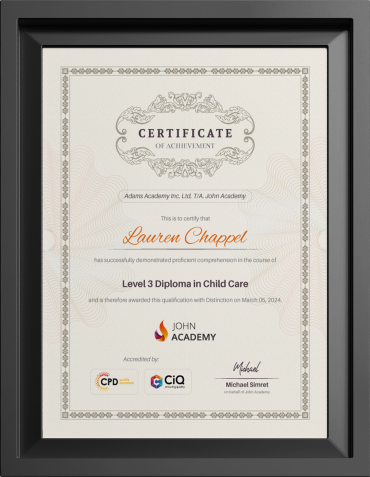
When I started taking my cooking classes online, I thought it won’t be much a difference than a regular class. I even thought remote learning and teaching might be more convenient for both parties since we will get to sit in their own comfort zone and adjust to the best arrangement.
Oh, did I prove to be wrong on the first few attempts!
Miscommunication, the unfamiliarity of the tools, comfort preceding actual learning needs, pets taking over the class and what not!
Although after some research and trial-error process we finally got it right in two weeks or so. This article is to share my experience, the challenges I faced, the remedies I found and a few handy tips for remote learning and teaching.
Table of Contents
Perks of Remote Learning and Teaching
While the benefits of online learning and teaching are mostly related to maximizing the time and resources, along with it, a few other perks won me over to this remote-education approach.
Minimum time lost in commuting
With almost zero minutes spent commuting, you are saving a good chunk of your time and most importantly your energy is spent on something productive.
Personalised and comfortable learning environment
You get to stay in a familiar environment, you can adjust your setting for your ease.
Flexible learning hours
You don’t necessarily need to schedule your classes as typical school hours, both students and teachers can agree to a time of their convenience. In addition, any missed classes can be rescheduled at another time of the day or week easily.
Accessible learning materials
If the learners happened to lapse out during a live class or miss it entirely, recording technologies and course materials can be saved digitally and accessible for catching up.
Opportunity to develop soft skills
With remote learning, you get to learn a bunch of techy stuff, which is very important considering how the contemporary world works. Technological fluency and responsible usage of the internet is vital for professional growth.
Furthermore, online learning will initiate some must-have soft skills like communication, teamwork and time management.
Challenges of Online Learning and Teaching
Even though remote learning and teaching is not a new concept, with its popularity the changes and challenges of online education became more apparent in recent months.

Managing learning materials online
My first challenge in teaching remotely was creating the learning resources and make them accessible for the students. At first, I went for the basic Word, Doc, PowerPoint slides but soon figured out that they are not very convenient or engaging as it could have in a regular classroom.
Miscommunication
There is a huge difference in terms of motivating in person over an online class or remote instructions. Especially if you are taking a class with multiple students and where the hands-on exercises may be beneficial for effective learning.
Any miscommunication means you are wasting time and energy. From the learner’s perspective, it is easy to lose track of the lesson if you misunderstand or overlook a hint.
Picking the right tools for remote learning
What came as a surprise to me is that not every App or tool is appropriate for every type of classes. There are apps that are good for collaborative learning, a few are good for live instructions, and there are different tools for submitting assignments or sharing resources.
You might even have to utilise the traditional chalkboard like equipment for your remote class!
With the convenience of learning and teaching from home or a comfortable environment, there is bound to be some distractions. For me, it was my nephew and my cat.
“What are you doing?” , “What is that?”, “Let me try!!”
And the cat in a continuous effort to take over my keyboard!
Reduced scope of interactive team learning
Interactive or collaborative learning has been established as a vital method for effective learning for any age group of learners. Remote learning challenges this process and I found that it makes it equally difficult for the teachers to encourage the students as a group.
7 Tips for Effective Remote Learning
1. Create a comfortable environment
Where you will have access to everything you will need for the session. But don’t get too cosy with that you fall asleep in the middle of the class!

Don’t get too cosy while learning online!
2. Put away your phone
Unless it’s absolutely necessary, don’t let yourself get distracted with a call or text. Checking up on social media is highly discouraged for obvious reasons!
3. Learn actively
Try to participate in discussions and provide feedback to the teachers. If possible engage with other participants and share your ideas.
4. Maintain a schedule
Scheduling is important for both learners and teachers. So you can prepare ahead for the lesson. This will give you an extra boost of confidence and assurance for the lesson you are taking.
5. Record the class
If the class doesn’t provide recorded sessions, you can ask for permission and record the class yourself for future reference.
6. Be regular with assignments
Try to follow up with the classes and assignments regularly. You don’t want to pile up them for later and end up going over the earlier lessons again!
7. Focus on the lesson
Pay attention to the content rather than how it’s delivered or the looking for flaws in the teaching process. Your ultimate goal should be to get the most out of the session in terms of knowledge and growth. You may also check helpful guides like My GRE Exam Preparation if you are about to take an examination real soon.
6 Tips for Effective Remote Teaching
1. Improvise your communication
You have to think outside the box to actually tap into the learners mind and understand their needs or get feedback. Don’t be afraid to use humour as a tool to connect.
2. Use appropriate apps and tools
It can be a little difficult to find the perfect tools for remote teaching. Especially when there are numerous apps and platforms being introduced every day.
Interactive tools like Google Classroom is a great way to manage your classes, including learning resources and assignments. Video conferencing apps like zoom, google meet or the age-old Skype will provide you with options to conduct the lesson for a group or individuals.
But you should have the basic knowledge about internet and computing and able to run the key applications.
 Improvise and reach out to the learners while teaching remotely
Improvise and reach out to the learners while teaching remotely
3. Provide feedback
To make the students engaged and feel involved in the learning process, initiate to create an open environment to share their ideas and thoughts.
4. Let them do stuff
Don’t assign tasks just for the sake of it, rather make them enjoyable and informative at the same time. This is a great way to help the students become proactive while learning from home.
5. Recognise milestones and personal achievements
Appreciate the learners’ effort and try to celebrate their accomplishments. Acknowledging their growth will motivate them to put more effort into the process.
6. Set SMART goals
Before you even set the lessons, you should prioritise on fixing a set of SMART goals. This will help both the remote learners and teachers to actually achieve a specific goal rather than counting classes and hours.
Related:
1. 15 Teaching Skills Needed for Online Teachers – Learn How to Teach Online
2. The Changing World of Remote Working, Teaching, and Learning
3. How Teaching English As a Second language?
The idea is to be realistic, don’t expect to do a lot or cover everything, take a step-by-step approach, since online learning can already be a concept the learners are unfamiliar with or feel at unease with the process.
Be it online or in house class, both the participants and teachers needs to understand the limitations for effective online learning.
A more important but sadly ignored criteria are mental and physical well-being. Poor Mental health can play a negative role in the learning process and hamper the overall growth of the learners. Proper understanding and taking a sincere approach is the way to go for any form of learning.
Read more blogs
- Top 10 Online Courses UK Learners Are Taking This Year
- How to Protect Yourself from COVID‑19 Omicron variant Effective Prevention Tips
- What Is Interactive Learning? Techniques That Actually Work
- Top 10 Fast-Growing Careers in the UK You Should Know About in 2025
- How to Maximise Your Productivity: Strategies That Work
- How to Become a Tax Accountant: 7 Simple Steps for Beginners
- How To Become A Detective In The UK?- The Ultimate Guide
- How Research Papers Contribute to College Learning
- Top 7 SEO Blogs You Should Read for Higher Education Marketing
- Smart Tech Maintenance Tips to Enhance Your Learning Experience



